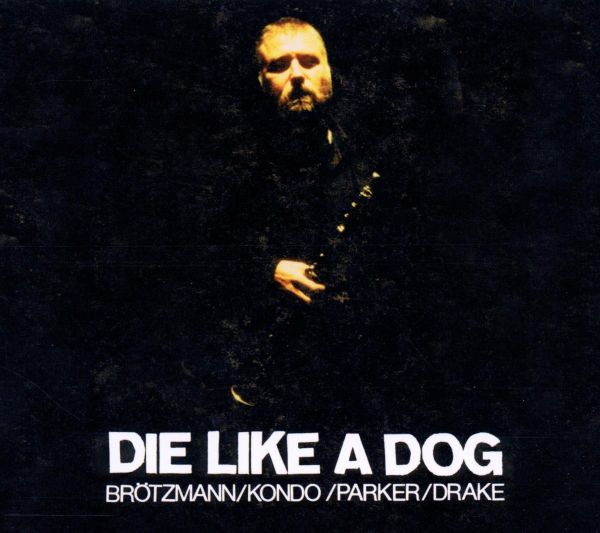
Brotzmann/kondo/parker/drake
Die Like A Dog
In 1993, Peter Brotzmann launched his Die Like A Dog quartet to pay tribute to the short and turbulent life of his near-contemporary Albert Ayler, a synchronistic saxophone innovator and fellow timbral virtuoso ("It's not about notes, it's about sounds"). all the highs and lows of an insane "career" that nudged Albert ever closer to that dog's death in the East River. "Die Like A Dog", though, has to be a misnomer for the life-affirming music of Brotzmann's quartet. Kondo, a most curious fellow whose every appearance seems a Zen manifestation - he pops up suddenly, like an oriental rabbit out of a hat - is, according to this month's jazz press, on conversational terms with the Dalai Lama. He's also a long term student of T'ai Chi and knows when to hit. William Parker's been quoted, in David Such's book Avant-Garde Jazz Musicians, with the following remark: "For free music to succeed it must grow into free spiritual music. There is a music which is not based on technique but on being a messenger of the Lord. We are not the creators, we are the vehicles through which the Creator sends vibrations." Peter Brotzmann strikes you as an unlikely leader of a troupe of neo-mystics? Makes you think - but not for too long! - about Blake's famous contention that the road of excess leads to the palace of wisdom. Anyway, here is a group that includes members inspired, in wildly differing degree, by the Smirnoff bottle and the Tibetan Book of the Dead, by the profane and the spiritual, by old and new jazz and the music of the whole wide world. It is a group that Peter leads by not seeking to dominate it. This quartet makes music together rather than in mutual competition, music that has an extraordinarily unforced character, for all the technical complexities involved. Roles are not much discussed, each member can claim all the 'freedom' he needs inside the group, but there is also a lot of giving, of generosity, a lot of complemen-ting and enhancing of each other's contributions. There is a great deal of finesse in the interaction, much light and shade, understanding of sound projection and how to make the small gesture as potent as the large one. The transparent recording quality helps to make this clear